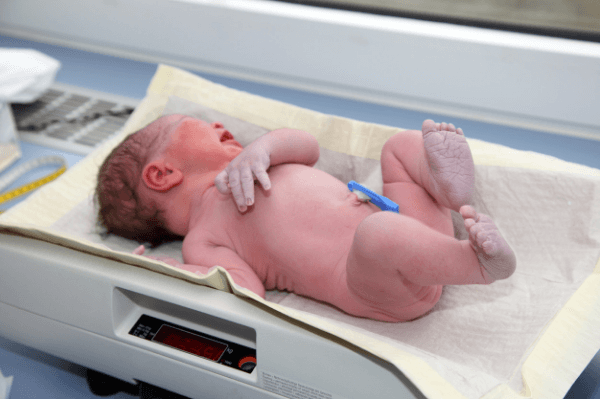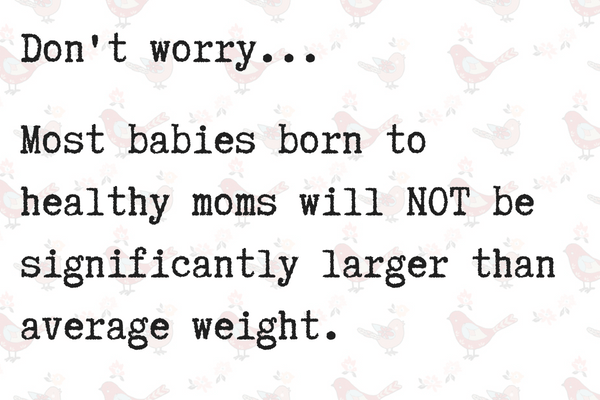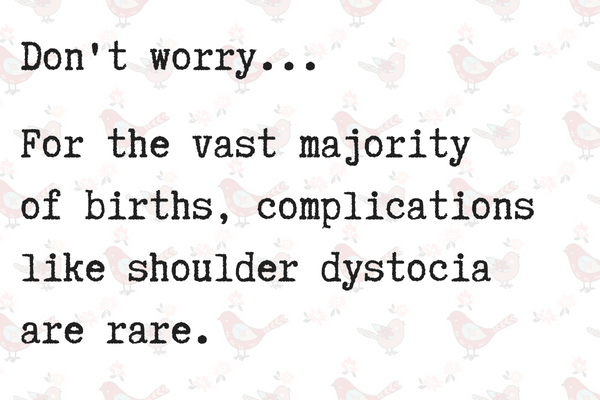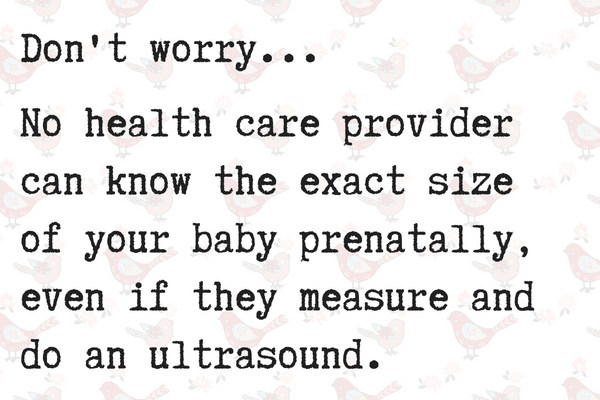
The last few weeks of your pregnancy are finally here! But your doctor is telling you that you might have a large baby and you’re starting to worry. “Will I have to have an induction or possibly a c-section? Does this mean I have to abandon my plans for a natural childbirth?” Mama, take a deep breath and READ ON! It is possible to have a natural childbirth with a large baby!
Estimated reading time: 5 minutes
The average birth weight for babies in the United States is 7lbs, 5oz. “Fetal macrosomia” is the term that describes a newborn who is larger than average, weighing over 8lbs 13 oz. (1).
In low-risk pregnancies, only 3.6-6% of babies will be born large. However, it is much more common when mom has gestational diabetes, because baby is exposed to sustained high glucose levels. This risk is decreased by treating the diabetes according to your doctor’s recommendations.
Don’t worry — Most babies born to healthy moms will NOT be significantly larger than average weight.

When born vaginally, large babies are at an increased risk for birth trauma, such as shoulder dystocia. Shoulder dystocia is a complication in which the head is delivered through the vagina but the shoulders are too wide and get stuck inside mom’s body. Fortunately, it’s rare, occurring in only 1.4% of vaginal births.
With that said, when baby weighs over 8lbs 13oz, the risk for shoulder dystocia does increase. If mom has untreated gestational diabetes, the risk jumps to 19.9-50% (2).
Don’t worry — For the vast majority of births, complications like shoulder dystocia are rare.

According to ACOG, weighing the baby after delivery is the ONLY way to accurately diagnose macrosomia (3).
However, macrosomia is often “diagnosed” during pregnancy, possibly innacurately:
Don’t worry — No healthcare provider can know the exact size of your baby prenatally, even if they do an ultrasound.

Research reveals that these prenatal measurements of baby’s weight are usually inaccurate (3). To illustrate this, a recent survey found that 32% of women were told during pregnancy that their baby might be getting too large. Of these women, the actual average birth weight of their babies ended up being only 7lbs 13oz (4). This is well below the size limits of macrosomia. For a healthy woman with a low-risk pregnancy, there is a strong likelihood that your baby is an average size, despite any prenatal measurements.
Don’t worry — Many moms are told prenatally that their baby might be too large. These predictions are usually wrong.

Kopa Birth’s online childbirth classes allow you to prepare for a natural childbirth from the comfort of your own home, 24/7. Enroll today in our free online childbirth class to learn more about preparing for a natural hospital birth.
References:
The last few weeks of your pregnancy are finally here! But your doctor is telling you that you might have a large baby and you’re starting to worry. “Will I